
Park University International Center for Music Presents


Park University International Center for Music Presents
Saturday, December 7, 2024 • 7:30 p.m.






Dear Esteemed Patrons and Lovers of Music,
As we embark on a new season at the International Center for Music at Park University, I find myself reflecting on the profound impact that music has on our lives. It’s not just the sound that resonates, but the emotion and dedication behind every performance that truly moves us. As Artistic Director and founder of this institution, I am continuously inspired by the exceptional talents of our students, faculty, and guest artists who pour their hearts into their craft. Kansas City is a remarkable place, home to a community that cherishes and supports the arts with unparalleled enthusiasm. Our concert series is designed to bring you closer to the magic of live music, offering an intimate and accessible way to experience the brilliance of our performers.
Our mission remains steadfast: to create an environment where musical excellence thrives, free from the distractions and financial burdens that often hinder artistic growth. At Park ICM, we are committed to nurturing the next generation of musicians with the same intensity and focus that shaped my own musical journey.
This season, we are proud to present a lineup that includes not only our extraordinary students and faculty but also internationally acclaimed guest artists whose contributions to the world of music are nothing short of legendary. In keeping with our mission, we will also introduce you to the newborn stars, the bright talents who represent the future of classical music. Each concert is an opportunity to witness the convergence of passion, discipline, and talent, creating moments that linger in the heart and mind.
I invite you to join us in celebrating the transformative power of music. Your presence and support are invaluable to us, fueling our drive to reach new heights of artistic achievement. Together, let’s create a symphony of shared experiences that transcends time and space.
With deep gratitude,


Stanislav Ioudenitch Founder and Artistic Director International Center for Music at Park University
P.S. Each performance is a manifestation of our shared love for music. Your presence and applause amplify our drive to elevate the art form further.
OVERTURE TO MESSIAH
.....................................................................
George Frideric Handel (1685-1759)
CAROL: O COME, ALL YE FAITHFUL
................................................................................
J.F. Wade, arr. David Willcocks (audience please stand and sing)
“REJOICE GREATLY” FROM MESSIAH ............................................................................................
George Frideric Handel
Payton Boldt, soprano
FANTASIA ON GREENSLEEVES
...................................................................
Ralph Vaughan Williams (1872-1958)
LES PATINEURS (“THE SKATERS”)
Emile Waldteufel (1837-1915)
Ben Lerman, conductor
MARIA WIEGENLIED (“THE VIRGIN’S SLUMBER SONG”) ...........................................................................................
Max Reger (1873-1916)
Payton Boldt, soprano
INTERLUDE, FROM A CEREMONY OF CAROLS
......................................................................................
Benjamin Britten (1913-76)
CAROL: SILENT NIGHT ........................................................................................
(audience please remain seated and sing)
Franz Gruber (1787-1863)
O HOLY NIGHT ........................................................................................
Adolphe Adam (1803-56)
Payton Boldt, soprano
GERMAN DANCE, K.605/3 ...................................................................
Wolfgang Amadeus Mozart (1756-91)
“LET THE BRIGHT SERAPHIM” FROM SAMSON
Payton Boldt, soprano
George Frideric Handel
Andrew Bishop, trumpet
CAROL: HARK! THE HERALD ANGELS SING
................................................................
Felix Mendelssohn, arr. David Willcocks
(audience please remain seated and sing)
RADETZKY MARCH, OP.228
Johann Strauss (1804-49)
O come, all ye faithful, joyful and triumphant!
O come ye, O come ye, to Bethlehem
Come and behold Him
Born the King of Angels
Refrain: O come, let us adore Him
O come, let us adore Him
O come, let us adore Him
Christ the Lord!
God of God, Light of Light
Lo, He abhors not the Virgin’s womb
Very God, Begotten, not created Refrain
Sing, choirs of angels, sing in exultation
Sing, all ye citizens of heaven above!
Glory to God in the highest! Refrain
Yea, Lord, we greet Thee, born this happy morning
Jesus, to Thee be glory given Word of the Father
Now in flesh appearing Refrain
Maria sitzt am Rosenhag und wiegt ihr Jesuskind, Durch die Blätter leise weht der warme Sommerwind. Zu ihren Füssen singt ein buntes Vögelien:
Schlaf’, Kindlein, süsse, schlaf’ nun ein!
Hold is dein Lächeln, holder deines Schlummers Lust, Leg dein Müdes Köpfchen fest an deiner Mutter Brust!
Schlaf’, Kindlein, süsse, schlaf’ nun ein!
Mary sits among the roses and rocks her Jesus-child, The warm summer wind gently wafts through the leaves. A happy little bird sings at her feet: Sleep, sweet little child, now fall asleep!
Your smile is gentle, yet more gentle the joy of your slumber, Lay your tired little head securely on your mother’s breast. Sleep, sweet little child, now fall asleep!
Silent night, holy night! All is calm, all is bright. Round yon Virgin, Mother and Child. Holy infant so tender and mild, Sleep in heavenly peace, Sleep in heavenly peace
Silent night, holy night! Shepherds quake at the sight. Glories stream from heaven afar Heavenly hosts sing Alleluia, Christ the Savior is born! Christ the Savior is born
Silent night, holy night! Son of God love’s pure light. Radiant beams from Thy holy face With dawn of redeeming grace, Jesus Lord, at Thy birth Jesus Lord, at Thy birth
Hark! The herald angels sing, “Glory to the newborn King! Peace on earth and mercy mild, God and sinners reconciled.”
Joyful, all ye nations rise, Join the triumph of the skies, With th’angelic host proclaim: “Christ is born in Bethlehem.”
Hark! The herald angels sing, “Glory to the newborn King!”
Christ by highest heav’n adored, Christ the everlasting Lord!
Late in time behold Him come, Offspring of the Virgin’s womb. Veiled in flesh the Godhead see, Hail the incarnate Deity, Pleased as man with man to dwell, Jesus, our Emmanuel.
Hark! The herald angels sing, “Glory to the newborn King!”
Hail the heav’n-born Prince of Peace!
Hail the Son of Righteousness!
Light and life to all He brings, Ris’n with healing in His wings.
Mild He lays His glory by, Born that man no more may die, Born to raise the sons of earth, Born to give them second birth.
Hark! The herald angels sing, “Glory to the newborn King!”

Originally from Reading, Mass., Steven McDonald, director of orchestral activities, has served on the faculties of the University of Kansas, Boston University and Gordon College. While in Boston, he conducted a number of ensembles, including Musica Modus Vivendi, the student early music group at Harvard University. McDonald also directed ensembles at the Massachusetts Institute of Technology, serving as founder and music director of the Summer Opera and Independent Activities Period Orchestra, and conductor of the MIT Chamber Orchestra and the Gilbert and Sullivan Players.
At the University of Kansas, McDonald served as assistant conductor of the KU Symphony, and was the founder and music director of the Camerata Ensemble of non-music majors, and of the chamber orchestra “Sine Nomine,” a select ensemble of performance majors. Additionally, he has conducted performances of the KU Opera. He has also served as vocal coach at the Boston University Opera Institute and at Gordon College.
McDonald served as music director of the Lawrence (Kan.) Chamber Orchestra from 2007-14, during which time the group transformed into a professional ensemble whose repertoire featured inventive theme programs and multimedia performances. In 2009, he was selected to conduct the Missouri All-State High School Orchestra, and in 2011 was the first conductor selected as guest clinician at the Noel Pointer Foundation School of Music which serves inner-city students in Brooklyn, N.Y. An avid proponent of early music, McDonald has also taught Baroque performance practice at the Ottawa Suzuki Strings Institute summer music program, and regularly incorporates historically informed practice into his performances.
McDonald is a graduate of the Boston University School for the Arts, the Sweelinck Conservatory of Amsterdam (The Netherlands) and the University of Kansas School of Fine Arts.

Payton Boldt (soprano) is working to receive her master’s degree in Vocal Performance at the University of Missouri-Kansas City, studying with Dr. Maria Kanyova.
She has performed with numerous opera companies around the United States and in Italy, appearing as Este Dame in Mozart’s Die Zauberflöte, Kate in Gilbert and Sullivan’s The Pirates of Penzance, Zerlina in Mozart’s Don Giovanni, Adele in Strauss’ Die Fledermaus, Pamina in Mozart’s Die Zauberflöte, and Adina in Donizetti’s L’elisir d’amore.
She is absolutely thrilled and honored to be performing with such fabulous musicians this evening. She wants to thank you all for coming, and hopes you enjoy the show!

Andrew Bishop has enjoyed a successful and diverse career throughout the Midwest and Colorado front range area. After moving back to the Midwest, Andrew won the Principal Trumpet chair with the Des Moines Symphony in 2019, and in the fall of 2021 became the Assistant Professor of Trumpet at Iowa State University. Since then he has also appeared with the Kansas City Symphony, Omaha Symphony, Wichita Symphony and Quad City Symphony.
Andrew was born and raised in Lindsborg, KS, known as “Little Sweden U.S.A.” He cultivated his musical endeavors under Lindsborg’s extraordinary support of the fine arts and strong musical traditions. During his youth, he performed in the Bethany Oratorio Society’s production of Handel’s Messiah and studied trumpet with Roger Thorstenberg. He studied trumpet performance at Wichita State
University, where his primary instructors were Les Linn, Bob Grim and John Hagstrom. He also holds a Masters degree in trumpet performance from the University of Missouri.
During his academic studies, Andrew was a winner of the Wichita State University Concerto/Aria Competition and performed the Tartini Concerto in D with the WSU Symphony. He won the 2004 University of Missouri Concerto Competition and performed the J.F. Fasch Concerto in D for Trumpet, 2 Oboes, Strings and Continuo with the University Philharmonic. He was a recipient of the MU Emerging Artist Award, and appeared as a featured soloist with the University of Missouri Trumpet Ensemble at the 2004 International Trumpet Guild convention in Denver, CO, performing the Concerto in E-flat by G.H. Stölzel. In 2010, Andrew won the Principal Trumpet chair with the Fort Collins Symphony, performing to acclaim Bach’s Brandenburg Concerto No. 2 on his first Masterworks Concert. He was granted full tenure after his first full season in 2011, and went on to appear with FCS as a featured Guest Artist performing Haydn’s Trumpet Concerto in E-flat.
While in Colorado, Andrew was also Principal Trumpet with the Colorado Bach Ensemble, Opera Fort Collins and Canyon Concert Ballet. He has also appeared regularly with the Colorado Symphony Orchestra, Colorado Ballet Orchestra, Colorado Music Festival Orchestra, Boulder Philharmonic, Greeley Philharmonic, Pro Musica Colorado and Cheyenne Symphony. As a chamber player, Andrew is Co-Principal Trumpet with the Apollo Chamber Brass, as well as a member of the Boulder Brass. He has also appeared with the Denver Brass, Epic Brass Quintet, Wichita Brass Quintet and the University of Missouri Faculty Brass Quintet. He has been a trumpet lecturer at the University of Northern Colorado and is also in demand as a featured soloist and clinician. Andrew also founded his own music engraving business, TrptShallSound Publications, and recently through Art of Sound Music has published “The Andrew Bishop Orchestral Editions,” a project that has so far created over 35 modern editions of popular standard orchestral repertoire for trumpet. The collection can be found at: Art of Sound MusicAndrew Bishop Orchestral Editions Andrew enjoys spending free time arranging music for trumpet, brass quintet and large brass ensemble. He is a three-time World Champion (self-given title) Cribbage player. He also has an affinity for the game of baseball, and faithfully carries on the Bishop family tradition of being loyal St. Louis Cardinals fans.

Ben Lerman began studying the violin at age 3, making his solo orchestral debut at age 14 playing Sarasate’s Zigeunerweisen with the Greenwich Village Orchestra in New York and has received awards in several competitions including the Camerata Artists International competition and the New York Concerti Sinfonietta Competition. He performed the Tchaikovsky Violin Concerto with the New York Concerti Sinfonietta and when re-engaged with the Greenwich Village Orchestra.
Ben has had the opportunity to participate in the masterclasses of Midori Goto, Shmuel Ashkenasi, Rachel Barton-Pine, Kurt Sassmannshaus, Herbert Greenberg, Victor Danchenko, Itzhak Rashkovsky and Gerardo Ribeiro, among others. He has attended numerous music festivals including the Bowdoin International Music Festival, Meadowmount School of Music, Center Stage Strings, Summit Music Festival, and the Innsbrook Institute, among others.
As a chamber musician Ben has had coachings with members of the Cavani, Calidore and Linden Quartets, as well as with members of the New York Philharmonic. In 2020 he graduated from the Manhattan School of Music Precollege Division where he was a student of Xiao Wang. Ben previously attended the Indiana University Jacobs School of Music as a recipient of the Premier Young Artist Award, where he studied with Mauricio Fuks and Itamar Zorman. He currently studies with Ben Sayevich on a Full Scholarship at the International Center for Music at Park University.
As a conductor, Ben has attended courses the International Conducting Workshop and Festival, the Miami Music Festival, and the Pehlivanian Professional Opera Academy, where he conducted Puccini’s La Bohème on a tour of Slovenia.
Flute
STEVEN MCDONALD, MUSIC DIRECTOR
Christina Webster
Dana Joras
Trumpet
Andrew Bishop
Jennifer Oliverio
Harp
Deborah Clark
Percussion
Mark Lowry
Mumin Turgunov, concertmaster
Yuren Zhang
Vincent Cart-Sanders
Ilkhom Mukhiddinov
Sun-Young Shin
Ilvina Gabrielian
Violin II
Aviv Daniel, principal
Yin-Shiuan Ting
Yiyuan Zhang
Jose Ramirez
Alla Krolevich
Casey Gregory
Viola
Christian dos Santos, principal
Victor Diaz
Iana Korzukina
Samin Golozar
Kathryn Hilger
Cello
James Farquhar, principal
Nikita Korzukhin
Mardon Abdurakhmonov
Diyorbek Nortojiyev
Ainaz Jalilpour
Otabek Guchkulov
Jordan Proctor
Bass
Kassandra Ferrero
Krista Kopper

Overture to Messiah
“Rejoice greatly” from Messiah
“Let the Bright Seraphim” from Samson
Handel spent his entire career producing operas, oratorios, and chamber music at lightning speed: It was said that he could compose an aria in minutes, almost as quickly as he could copy it down. So perhaps it should come as no surprise that he could complete Messiah in only 24 days. Nevertheless, the composition of this piece remains a miracle of musical creation, not just because of the speed with which it was put to paper but because of the unflagging inspiration and unequaled brilliance and durability of the result.
The ink was barely dry on the composer’s final Italian opera, Deidamia, when he took up Messiah in the late summer of 1741. The 56-year-old composer had already suffered a stroke and had only recently emerged from a period of depression that had plagued him during the 1730s, the result largely of the waning fortunes of the Italian opera tradition to which he had devoted his career in England. The English oratorio, drawing upon a genre that was already nearly 150 years old when Handel approached it, had a number of advantages over opera: It dealt with Biblical subjects that audiences knew, it was sung in English, it retained the most attractive elements of opera seria (tuneful melodies, passionate drama, and rich orchestration), and it added to the mix a number of brilliant, often flashy contrapuntal choruses.
Photo: Damian Gonzalez
Thus the oratorio was just the thing that Handel needed to cure his “Italian-opera blues.” When Charles Jennens approached him in 1941 with a collection of passages he had culled from the Bible and the Prayer Book Psalter, the composer was immediately inspired by the idea of a large-scale work on the subject of the Messiah.
The first performance of Messiah took place in April 1742 in Dublin, at a charitable benefit where it was greeted warmly. The London premiere the following year drew criticism because it was performed in a theater (no less than Covent Garden) instead of a house of worship or other suitable venue.
Yet Messiah is, in many ways, a theatrical work: The Overture is clearly designed
to prepare the listener for high-stakes drama, and the soprano’s effervescent “Rejoice Greatly” is one of several arias in Messiah that would have felt right at home on the opera stage. Drawn from the Book of Zechariah, the text of this aria seems to foretell of the coming of a Messiah — “the righteous Savior, and He shall speak peace unto the heathen.”
Much of Messiah’s sparkling energy spilled over into Samson, which Handel composed immediately afterward and brought to Covent Garden in early 1743. Based on Milton’s poetic rendering of the Samson story, the oratorio infuses the tale with such verve that it has, in fact, frequently been performed as an opera. In the durable “Let the Bright Seraphim,” the penultimate number of the oratorio, an Israelite Woman calls forth seraphim and cherubim to honor Samson, the dead hero — whose obedience has brought glory to God and delivered a stark lesson to the Philistines.
Vaughan Williams often spoke of folk song as a “common stem” of music from which composers are free to draw — tunes that are an expression of national sentiment, in his case of “Englishness.” He devoted a great deal of time and attention to folk song, much as Bartók and Kodály had in Eastern Europe in the early-20th century and Alan Lomax would in the United States a generation later.
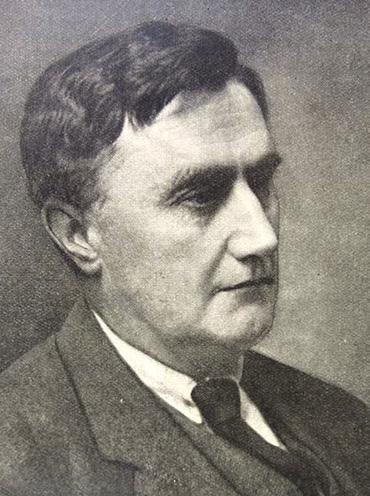
Folk songs are found in many of Vaughan Williams’ works: not just in more conspicuous places such as the Five Variants of Dives and Lazarus, but in the very fabric of much of his vocal, chamber, and orchestral music. Some play a central role in the opera Sir John in Love (1928), for instance, a fanciful version of The Merry Wives of Windsor that uses folk songs as points of reference.
“Greensleeves” is placed into one of the loveliest moments of Sir John in Love: Mrs. Ford sings the tune privately, accompanying herself on the lute, as she waits for the notorious Sir John’s arrival. The composer also uses a second folk song, the bawdy “Lovely Joan,” in the opera’s second act.
Thus when composer-arranger Ralph Greaves prepared the Fantasia on
Greensleeves for Vaughan Williams to conduct on a BBC Symphony concert in 1934, he simply adapted these two passages from Sir John in Love to create a sort of “sacred and profane” symphonic work with an A-B-A structure: “Greensleeves” being the A section and “Lovely Joan” the B. This adaptation, which the composer performed in London and submitted for publication in 1937, has become one of his most beloved orchestral works.
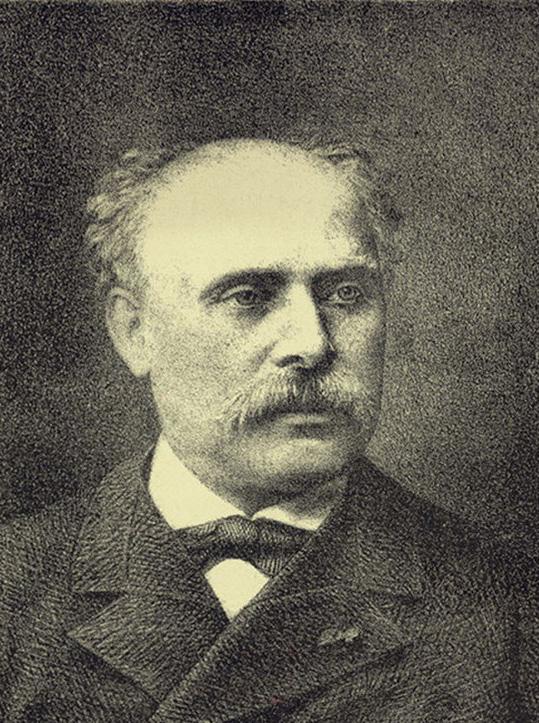
The way to have good ideas, as the Nobel Prizewinning chemist Linus Pauling used to say, is to have lots of ideas. The Strasbourg-born Émile Waldteufel, who was part of a large French-German family of musicians, composed some 300 dances for orchestra, half of them waltzes, yet he is remembered chiefly for only one: the Skaters Waltz, published in London in 1882. Better one than none!
Émile was born in Alsace when it was still French, but by the time he reached his mid-30s it had become part of Germany, in the aftermath of the Franco-Prussian War. His work is of consistent quality and would probably be better-known if it were not for the more prevalent works of his frequent rival, Johann Strauss II. Like Strauss, Waldteufel was raised by a father who led a famous orchestra; when Émile’s brother, Léon, was admitted to study violin at the Paris Conservatory, the whole family settled in the French capital.
Though sometimes viewed as a sort of French Waltz King, Waldteufel fils had already made a name for himself Britain and Berlin when he settled in Paris. In the latter, he became a fixture of formal balls and other high-end events. Les Patineurs was inspired by watching skaters at the Bois de Boulogne, an enormous park in the western portion of Paris. Its buoyant energy embodies the grace and ease of a skilled skater enjoying the ice on an indolent winter afternoon.



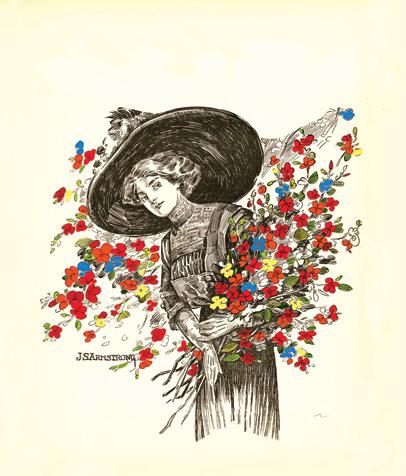

Placide Cappeau (1808-1877) is a name that might have faded into obscurity had it not been for his fortuitous encounter with a famous French composer in the 1840s.
Born in the Rhône Valley in the south of France, Cappeau was expecting to follow his father in the family’s wine-making business, but at the age of eight his right hand had to be amputated because of (I kid you not) a firearms accident.

Cappeau subsequently studied literature at the Collège Royal d’Avignon, and in addition to part-time activities as a wine merchant he became a fairly decent poet — writing expansive philosophical verse in both French and the Provençal language of southern France.
In the 1840s, Cappeau became acquainted with the Laureys, a Parisian family that had relocated to the region for a construction project: Mr. Laurey was a engineer working on a bridge to span the Rhône, and Emily Laurey was a gifted singer who knew the composer Adolphe Adam.
In December of 1847, when Cappeau was planning a business trip to Paris, his parish priest asked him to write a Christmas poem to take to Adam, with the idea of soliciting a musical setting to perform as part of the rededication of the church’s renovated organ. At some point on the long coach ride, as the story goes, Cappeau penned “Minuit, chrétiens” (Midnight, Christians) in a single burst of inspiration.
Just why a world-famous composer — who had recently written the acclaimed music for the ballet Giselle — would agree to set this verse is not clear. Perhaps he was enchanted with the poetry, or maybe it was just a favor to Emily Laurey. In any event, Adam completed the setting in a few days and, upon Cappeau’s return home, it was performed on Christmas 1847 at the village church of Roquemaure — evidently by Emily Laurey.
It was published throughout Europe in the 1850s and subsequently translated into dozens of languages. The English version known to us as “O Holy Night” was penned —with a few alterations of text — by the Boston-based music critic John Sullivan Dwight.

During Mozart’s last years, Emperor Joseph II appointed him to a minor court post as Imperial Chamber Composer — a position formerly occupied by Christoph Willibald Gluck, who died in November 1787. The primary responsibility of this job consisted of providing brief dance movements to be performed at court dances and balls. Thus, during a period in which Mozart was producing some of his glorious last works —symphonies, piano concertos, and operas such as Don Giovanni — he was also tossing off a plethora of delightful minuets, gavottes, contredanses, and allemandes.
The allemande was originally a duple-meter “German dance” with roots in the 16th century, but by Mozart’s day it had evolved into a more substantial triple-meter dance closer to the heavy-footed Ländler of the 19th century. Mozart produced 10 sets of German dances: The three grouped as K. 605 count among his last compositions.
They are scored for piccolo; pairs of flutes, oboes, bassoons, horns, and trumpets; timpani, and strings. The best known of these is No. 3, which Mozart himself subtitled Die Schlittenfahrt — an energetic “sleigh ride” that also includes posthorns and five tuned sleigh bells.
The Waltz King’s father, known as Johann Strauss Sr. (or “the Elder”), grew up during the period of early Romanticism, and thus his music is perhaps more straightforwardly Classical in its outlook than that of his sons. Strauss Sr. was orphaned as a child and apprenticed to a bookbinder, though his real love was music. He studied violin and viola and began composing a body of excellent works that would spur him to a life in music. He had a knack for the waltz and the quadrille, but he is

best known for having composed what is quite possibly the most famous march in history.
Strauss Sr. and his wife, Maria Anna (née Streim) had six children, of whom Johann Jr. and Josef were the eldest (though not the only musicians in the family). It is true that “Johann II” would eventually eclipse his father’s achievements, but he held the music in high regard and frequently included it on his own programs.
Johann Sr. wrote the Radetzky March in 1848 to mark the victory of Field Marshal Joseph Radetzky at the Battle of Custoza. What has been dubbed the First Italian War of Independence was actually an attempt by the Kingdom of Sardinia to wrest itself from the Austro-Hungarian Empire — an offense that was quashed, though not easily, by the more powerful Imperial forces.
The Radetzky March was first performed in August 1848 and quickly became a favorite: not just in Austria but around the world. It was later arranged for full orchestra and remains a favorite encore at the annual New Year’s Concert of the Vienna Philharmonic Orchestra.
The Park University International Center for Music Foundation exists to secure philanthropic resources that will provide direct and substantial support to the educational and promotional initiatives of the International Center for Music at Park University. With unwavering commitment, the Foundation endeavors to enhance awareness and broaden audiences across local, national, and international spheres.
Vince Clark, Chair
Steve Karbank, Secretary
Marilyn Brewster
Lisa Browar
Stanley Fisher
Brad Freilich
Ron Nolan
Shane Smeed
Benny Lee, Treasurer
John Starr
Steve Swartzman
Guy Townsend
Angela Walker
Karen Yungmeyer


Stanislav Ioudenitch, Founder & Artistic Director, Piano Studio
Behzod Abduraimov, Artist-in-Residence
Gustavo Fernandez Agreda, ICM Coordinator
Peter Chun, Viola Studio
Lolita Lisovskaya-Sayevich, Director of Collaborative Piano
Steven McDonald, Director of Orchestra
Ben Sayevich, Violin Studio
Daniel Veis, Cello Studio
Support the ICM, enjoy beautiful music and special events just for members.
Patrons Society members enjoy exclusive invitations to group events including meeting the talented ICM artists.

For more information on how to join our Patrons Society, scan the QR code with your mobile device camera.

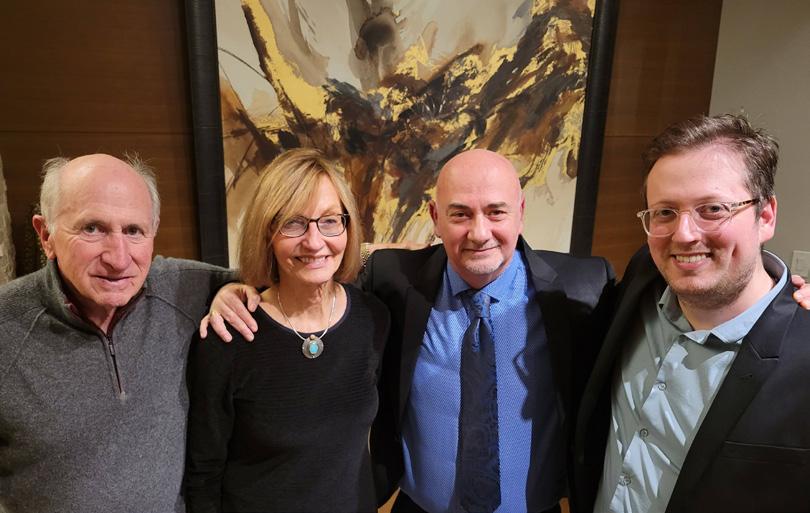

The Park University International Center for Music’s Patrons Society was founded to help students achieve their dreams of having distinguished professional careers on the concert stage.
Just as our faculty’s coaching is so fundamental to our students’ success, our Patrons’ backing provides direct support for our exceptionally talented students, concert season, outreach programs and our ability to impact the communities we serve through extraordinary musical performances.
We are continually grateful for each and every one of our Patrons Society members. For additional information, please visit ICM.PARK.EDU under “Support Us.”
We gratefully acknowledge these donors as of November 11, 2024.
Brad and Marilyn Brewster *
Steven Karbank
Benny and Edith Lee
Ronald and Phyllis Nolan
John and Debbie Starr
Steven and Evelina Swartzman
Jerry White and Cyprienne Simchowitz *
Jeffrey Anthony
Brad and Theresa Freilich
Shirley and Barnett C. Helzberg Jr. *
Holly Nielsen
Steinway Piano Gallery of Kansas City
Gary and Lynette Wages
Vince and Julie Clark
Stanley Fisher and Rita Zhorov *
Susan Morgenthaler *
Kay Barnes and Thomas Van Dyke
Lisa Browar
Mark and Gaye Cohen
Suzanne Crandall
Charles and Patty Garney *
Doris Hamilton and Myron Sildon
Colleen and Ihab Hassan
Lisa Hickok and Brian McCallister *
William and Regina Kort
Jackie and John Middelkamp
Kathleen Oldham
Kevin and Jeanette Prenger, ’09 / ECCO Select
James and Laurie Rote *
Stanley and Kathleen Shaffer
Guy Townsend
John and Angela Walker *
Nicole and Myron Wang*
Phil and Barbara Wassmer *
* 2024-2025 Member

Park University International Center for Music

Friday, January 24, 2025 • 7:30 p.m. 1900 Building • Mission Woods, Kansas
Experience the Park Trio in concert at the intimate 1900 Building!
Our esteemed resident ensemble, featuring ICM faculty members Ben Sayevich, Violin, Daniel Veis, Cello, and Lolita Lisovskaya-Sayevich, Piano, will present Anton Arensky’s Piano Trio in D minor, op. 32 and Antonín Dvořák’s “Dumky” Piano Trio. Don’t miss this opportunity to witness their exceptional artistry.
General Admission $30. Students $10 with I.D. For additional information, visit ICM.PARK.EDU





Imagine hearing — and seeing — every keystroke of a world-class piano performance in your own home. With spirio , you can enjoy music captured by renowned pianists, played with such nuance, power, and passion that it is utterly indistinguishable from a live performance.
Thousands of recordings by steinway artists are available at the touch of a button on the included iPad.
The library of music, videos, and playlists expands monthly and spans all genres. In addition to today’s greatest musicians, spirio delivers historic performances by steinway immortals , including Duke Ellington, Glenn Gould, Art Tatum, and many more.






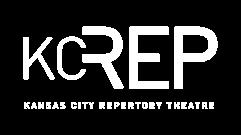




For me, it’s not just...
‘I’m the doctor and you’re the patient.’ We’re partners.”
- Raed Al-Rajabi, MD Physician Medicine Clinical Oncology
I don’t know any other way to treat my cancer patients than to become their partner. To be available to them whenever they need me. And that’s not just when they’re sitting across from me at an appointment. Cancer is a unique journey. And for me and all of my team, the only way to undertake it is together.
To schedule an appointment, call 913-588-1227 or visit KUCancerCenter.org to learn more.